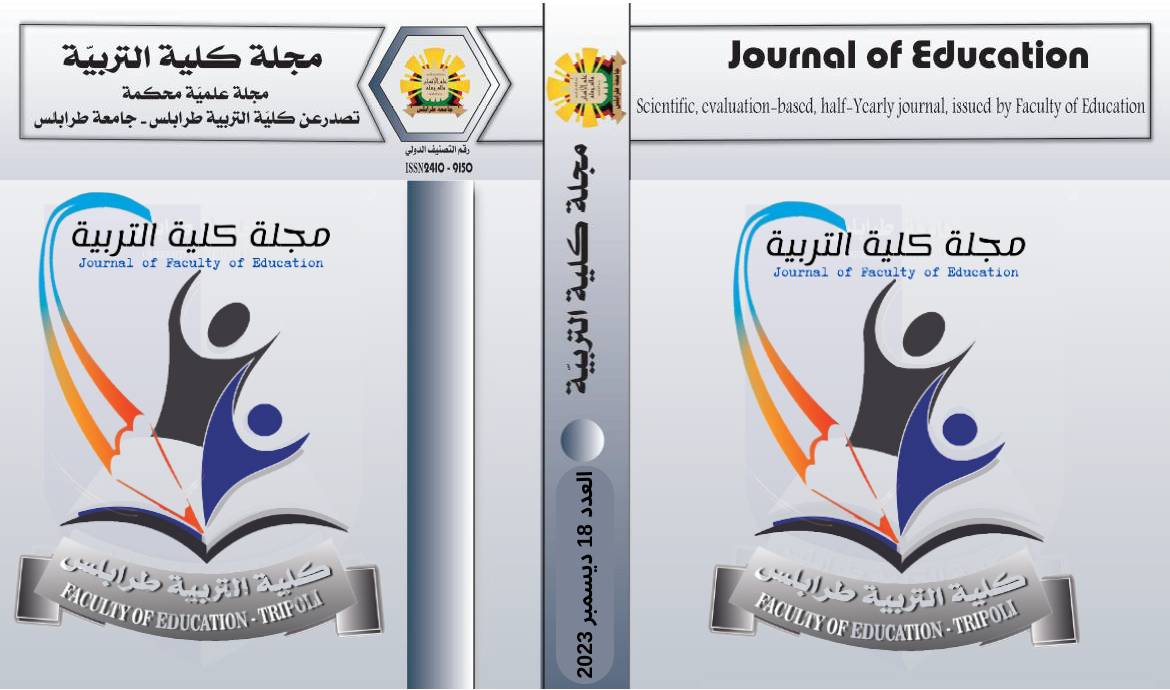المشكلات السلوكية التي يعاني منها الأطفال الصم وضعاف السمع من وجهة نظر عدد من معلميهم
الكلمات المفتاحية:
المشكلات السلوكية،، الصم،، ضعاف السمعالملخص
تمثل الإعاقة السمعية تحدياً وعقبة كبيرة أمام الأفراد والمجتمعات، اذ تمثل حاجراً أمام تواصل المصابين بهذه الإعاقة مع مجتمعاتهم وبيئتهم المحيطة بهم، كما تؤثر بشكل واضح على تحصيلهم الأكاديمي، وعلى تفاعلهم الاجتماعي مع الآخرين، كما تلعب دوراً هاماً في الخلل الواضح في سلوكهم، ومن هذا المنطلق قام عدد من الباحثين والمهتمين بهذه الفئة بإجراء العديد من الدراسات التي تبحث في هذا الجانب، ومن تلك الدراسات هذه الدراسة، والتي تهدف للتعرف على المشكلات السلوكية التي تعاني منها هذه الفئة في المؤسسات التعليمية ومراكز التربية الخاصة وخارجها، بعينة بلغت ( 50 ) معلمًا ومعلمةً من معلمي ذوي الإعاقة السمعية ، استخدم الباحث الاستبانة كأداة لجمع البيانات والمعلومات، وتم اختيار المنهج الوصفي التحليلي لبلوغ أهداف الدراسة، وللتحليل الاحصائي تم استخدام عدداً من الأساليب الإحصائية منها المتوسط الحسابي ، والانحراف المعياري ، والنسبة المئوية ، والوزن النسبي ، ومعامل الارتباط بيرسون ، ومعامل الثبات ألفاكرونباخ ، ومعامل الثبات جتمان ، واختبار (ت)، وأسفرت النتائج عن وجود مشاكل سلوكية كثيرة يعاني منها الأطفال الصم وضعاف السمع، وبدرجة كبيرة جدا، كما أسفرت نتائج الدراسة عن عدم وجود فروق ذات دلالة إحصائية في مستوى استجابات أفراد عينة الدراسة والتي تعزى لمتغير الجنس (ذكور /اناث ) كما يوصي الباحث في هذه الدراسة بالاهتمام بهذه الفئة وتوفير كافة الدعم المادي والمعنوي بجميع أشكاله ، وتوفير كافة السبل الممكنة لحلحلة كل المشاكل التي يعانيها المعاقين سمعيا على جميع المستويات وخصوصا على الجانب السلوكي.
Hearing impairment represents a major challenge and obstacle for individuals and societies, as it hinders their communication with surrounding societies and environments. It clearly affects their academic achievement and their social interaction. It also plays an important role in the apparent defect in their behavior. From this perspective, a number of researchers and those interested in this category have conducted many studies related to this aspect. This study aims to identify the behavioral problems that this category suffers from in and out the educational institutions and special education centers. A sample of (50) male and female teachers who teach special needs participated in the study. A questionnaire was used to collect data. The descriptive analytical approach was chosen to achieve the study's objectives. Several statistical methods were used, including the mean, standard deviation, percentage, relative weight, Pearson correlation coefficient, Cronbach's alpha coefficient, Guttman coefficient, and the t-test. The results revealed numerous behavioral problems experienced by deaf and hard of hearing children to a very significant degree. The study also showed no statistically significant differences in the level of responses among the study sample attributed to gender (male/female). The researcher recommends paying attention to this group and providing all forms of financial and moral support, and providing all possible means to solve all the problems suffered by the hearing impaired at all levels, especially in terms of behavioral aspects.




